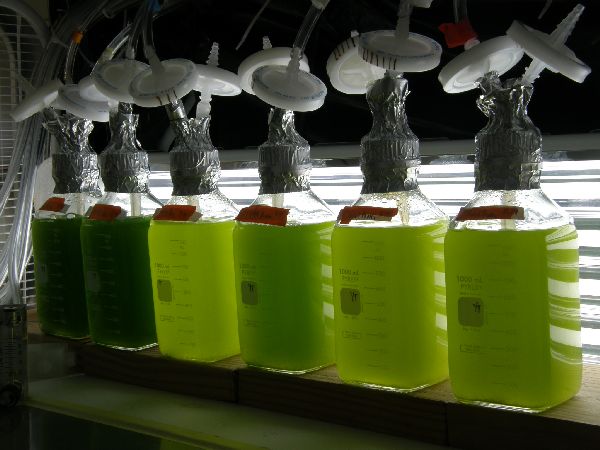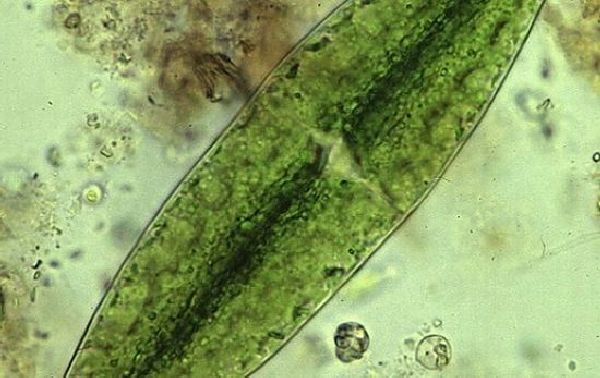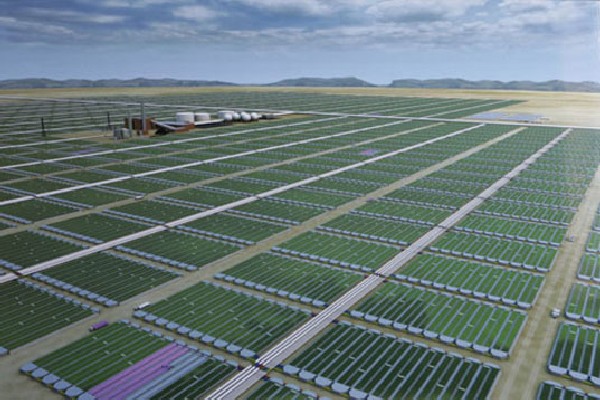The race to produce sustainable biofuel
With the demand for alternative fuels on the rise, engendered mainly by the ballooning prices of fossil fuels, there is an inherent need to manufacture algae based biofuels commercially by bringing down the input cost of production. As they are environmentally friendly, biofuels are greatly preferred over fossil fuels for energy production. Biofuels can be produced using both algae and food crops, but owing to many reasons it is a good idea to not use the latter for their production.

Food scarcity is a massive crisis that mankind will have to tackle in the future and using crops for production of fuel means plummeting the supply of food. Additionally, to grow food crops you need resources like arable land, fresh water, etc. and fertilizers such as superphosphate, the reserves of all which are limited. Thus, using food crops for biofuel production is not a feasible solution as it is much better to cultivate them to meet global food supplies. Thus, if biofuel from algae can be produced at a lower cost, then it would help greatly to combat the impending energy crisis.
Producing biofuel from algae
A good thing about using algae is that they can produce oils required to manufacture biodiesel as well as sugar needed to manufacture ethanol. One of the biggest benefits of using algae is that they produce a huge amount of energy, much greater than that produced by food crop based biofuels. For instance, the amount of energy produced by algae growing in a large sized garage is equivalent to the energy generated by soybeans growing on land that is as large as a football field.
As they are harvested in a short time of about 1-10 days, algae definitely grow a lot faster than food crops. Algae can grow double their size in 24 hours and sometimes even less. Although initial investment in land will be required to cultivate algae, you do not require arable land to crop them. Algae can be developed on land that is not suitable for planting food crops like desert areas, rocky soil and even land with saline groundwater resources. Moreover, algae can grow in any type of climate and weather conditions unlike food crops. That notwithstanding, the production of biofuels nevertheless remains expensive.
A good way to lower the cost of algae biofuels is to use strains with lower lipid content as they grow about 30 times faster than other types of algae. Along with fast growing algae strains, sourcing ones that can be harvested easily would help tremendously to lower the input cost of production. Finding varieties of algae that meet all these conditions will help immensely to bring down the cost of producing biofuels. Other huge hurdles that come in way of producing algae biofuel at a viable cost are the expensive equipment required and also sourcing sterile carbon dioxide at a low cost which can be supplied while growing algae in a closed system.
Current trends
1. Algae found in Roman baths can be used to produce biofuel

The creator: Holly Smith-Baedorf and Rod Scott
The product
Holly Smith-Baedorf, who is pursuing her Ph.D. at the University of Bath with Professor Rod Scott, found a type of algae that can be used for large scale production of biofuel. This algae, found in waters of Roman baths, has a delicate cell wall and high oil content, and therefore can be easily grown at high temperatures. Efforts to produce such algae on a massive scale are ongoing.
2. Solar powered photobioreactor generates biofuel using algae

The creator: Emergent Architecture
The product
With an exterior made of fiber-composite monocoque that has been pleated to give stiffness, this PhotoBioReactor has been manufactured by OriginOil. The machine has transparent polycarbonate apertures, which contain thin-film solar transistors that generate electricity required for its operation. The contraption will continue to operate in shade as well as pitch dark conditions thanks to the helix of lights provided in all the algae coils. Colonies of red and green algae that require CO2 and light at the front end are used to produce hydrogen or biofuel at the other end.
3. Nanofarming produces biofuel from algae without killing it

The creator: Researchers at DOE’s Ames National Laboratory and Iowa State University, in partnership with Catilin, Inc.
The product
In most processes of biofuel production, algae have to be terminated to extract their oil but the Iowa State University has given a complete turnaround to this conventional process. In the new method, free fatty acids are absorbed from living algae. This innovative technique has been made possible because of nanofarming. Using nanoparticles, oil is extracted on a molecular level and then mixed with a non-toxic biofuel catalyst to produce biofuel.
4. Alliance of Solray and Aquaflow

The creator: Solray and Aquaflow
The product
In an attempt to manufacture biofuel on a commercial scale, Aquaflow and Solray have entered into a partnership scheme. In this joint agreement, a method to grow algae from waste water streams has been applied, which are then utilized for manufacture biofuel. The process of manufacturing the biofuel has been founded by Solray, while Aquaflow has contributed the method of cultivating algae using waste water. The discharge of nitrogen and phosphate, which defile the ecosystem, has been reduced drastically in this method.
Environmental tradeoffs
Another great thing about algae is that they can be cultivated even with sea water or waste water, which is a plus point as this helps to conserve the depleting fresh water resources. As algae are biodegradable, they will not cause any harm to the environment. Algae grow really fast and generate copious amounts of energy. Also they require only water, sunlight and carbon dioxide to grow. Therefore, biofuel manufactured from algae is an excellent source of clean and green energy.




